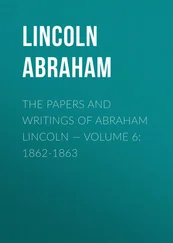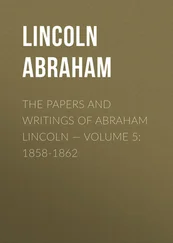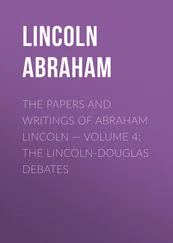One such measure of the sultan was to impose jizya on Brahmins. In an Islamic state all non-Muslims were required to pay jizya, but in India it ‘had never been levied from Brahmins,’ reports Afif. ‘They had been held excused in former reigns … [Firuz however held that] Brahmins were the very keys of the chamber of idolatry, and the infidels were dependent on them. They ought to be therefore taxed first … [When the news of the sultan’s decision spread] Brahmins of all the four cities [of Delhi] assembled and went … [to the sultan] and represented that Brahmins had never before been called upon to pay jizya … [and they threatened] to collect wood and burn themselves under the walls of the palace rather than pay the tax.’ But Firuz remained unrelenting. ‘The Brahmins remained fasting for several days at the palace until they were on the point of death. They then clearly perceived that the sultan did not intend to spare them. The Hindus of the city then assembled and told the Brahmins that it was not right for them to kill themselves on account of jizya, and that they would undertake to pay it for them … When Brahmins found that their case was hopeless, they went to the sultan and begged him in his mercy to reduce the amount they would have to pay.’ When Firuz agreed to this, Brahmins dispersed. In a related reform, Firuz made jizya a separate tax, while previously it was included in the land tax.
THE POLICIES AND actions of Firuz were usually guided by humane and liberal principles, but sometimes, impelled by religious fervour, he violated those principles. Thus when he invaded Orissa, he not only demolished the renowned Jagannatha temple at Puri, but also rooted up its idol and took it with him to Delhi, where, according to Afif, he ‘had it placed in an ignominious position,’ to be defiled by Muslims. Sirat-i-Firuz Shahi , an anonymous medieval work, further states, no doubt with considerable exaggeration, that Firuz slaughtered such a large number of Hindus in Puri that ‘no vestige of the infidels was left except their blood.’ Similar acts of vandalism and carnage were committed by him in a few other places also.
There is however some uncertainty about what he did at the temple of Jvalamukhi in Kangra. Ferishta states that the sultan ‘broke the idols of Jvalamukhi, mixed their fragments with the flesh of cows, and hung them in nosebags round the necks of Brahmins, and he sent the principal idol as a trophy to Medina.’ But, according Afif, ‘some infidels have reported that Sultan Firuz went specially to see this idol and held a golden umbrella over its head [in veneration] … Other infidels have said that Sultan Muhammad Tughluq [also] had held an umbrella over the same idol.’ Afif denies these claims.
There is no way of knowing what really happened in Kangra. It is possible that Firuz did not vandalise the Jvalamukhi temple, for he, though a rigidly orthodox Muslim, was also a highly cultured person, and he is known to have taken special care to preserve several ancient Indian monuments. Besides, while Muslim law prohibited the construction of new idol temples, it did not require old temples to be demolished. Though very many old Hindu temples were indeed vandalised and destroyed during the Sultanate period, and Firuz himself did that on a few occasions, it is possible that he treated the Jvalamukhi temple with special regard, especially as the temple was renowned for its vast library, which would have greatly appealed to the scholarly sultan.
Firuz did however strictly forbid the construction of new Hindu temples and shrines in his empire. ‘I destroyed these edifices, and I killed those leaders of infidelity …, and the lower order I subjected to stripes and chastisement,’ Firuz reports about one such incident. But he was careful not to go beyond what was prescribed in Islamic law. ‘I forbade the infliction of any severe punishments on Hindus in general,’ he states.
Firuz was particularly severe in dealing with Hindu holy-men. ‘A report was brought to the sultan that there was in Delhi an old Brahmin who persisted in publicly performing the worship of idols in his house, and that the people of the city, both Muslims and Hindus, used to resort to his house to worship the idol,’ reports Afif. ‘This Brahmin had constructed a wooden tablet which was covered within and without with paintings of demons and other objects … The sultan was informed that this Brahmin had perverted Muslim women, and had led them to become infidels. An order was accordingly given that the Brahmin with his tablet should be brought into the presence of the sultan.’ Muslim theologians then advised the sultan that the Brahmin should either become a Muslim or be burned. As the Brahmin refused to become a Muslim, ‘orders were given for raising a pile of faggots before the door of the durbar. The Brahmin was tied hand and foot and cast into it.’
IN HIS TREATMENT of Hindus, Firuz followed the dual policy of persecuting Hindu religious leaders, and of showing favours to low-caste Hindus to induce them to become Muslims. ‘I encouraged my infidel subjects to embrace the religion of the Prophet, and I proclaimed that everyone who … became a Muslim would be exempt from jizya,’ the sultan writes in his autobiography. ‘Information of this came to the ears of the people at large, and a great number of Hindus presented themselves and were admitted to the honour of Islam. Thus they came forward day by day from every quarter, and … were favoured with presents and honours.’
Firuz also sought to suppress heterodox Muslim sects. ‘I seized them all and I convicted them of their errors and perversions,’ he writes about Shias. He punished the Shia leaders and castigated their followers, ‘and so by the grace of god the influence of this sect was entirely suppressed.’ He was particularly repressive towards the various bizarre sects that flourished in India at this time, among Hindus as well as Muslims. He was especially severe towards the Tantric sect, which practised ritual sex. ‘I cut off the heads of the elders of this sect, and imprisoned and banished the rest, so that their abominable practises were put an end to,’ states Firuz.
At this time ‘there was in Delhi a man named Rukn-ud-din, who was called Mahdi, because he affirmed himself to be the Imam Mahdi, who is to appear in latter days, and [he claimed] to possess [divine] knowledge,’ notes Firuz. ‘He led people astray into mystic practices, and perverted ideas.’ Firuz publicised his condemnation of the cult, and ordered the mystic and his cult to be liquidated. People then rushed to his place, ‘tore him to pieces and broke his bones into fragments,’ Firuz reports approvingly. Firuz also suppressed a few other similar cults.
As in religion, so also in social practices, Firuz sought to enforce orthodox Islamic prescriptions. ‘A custom and practice unauthorised by the law of Islam had sprung up in Muslim cities,’ he writes. ‘On holy days women riding in palanquins or carts or litters, or mounted on horses or mules, or in large parties on foot, went out of the city to the tombs. Rakes and wild fellows of unbridled passion and loose habits took the opportunity which this practice afforded for improper, riotous actions. I commanded that no woman should go out to the tombs under pain of exemplary punishment.’
FIRUZ, THOUGH HE was rigidly orthodox in religion, was also a man of wide cultural interests, and was quite liberal in his patronage of culture. Thus when he found a library of 1300 old Sanskrit manuscript volumes in the temple of Jvalamukhi, he ordered several of them — particularly a volume on natural sciences, astrology and augury — to be translated into Persian. The translation of this book was noted by Ferishta, and was appreciated even by the hyper-orthodox Mughal chronicler Badauni, though he found that some of the other translated books were ‘unprofitable and trivial works on prosody, music and dancing.’
Читать дальше












